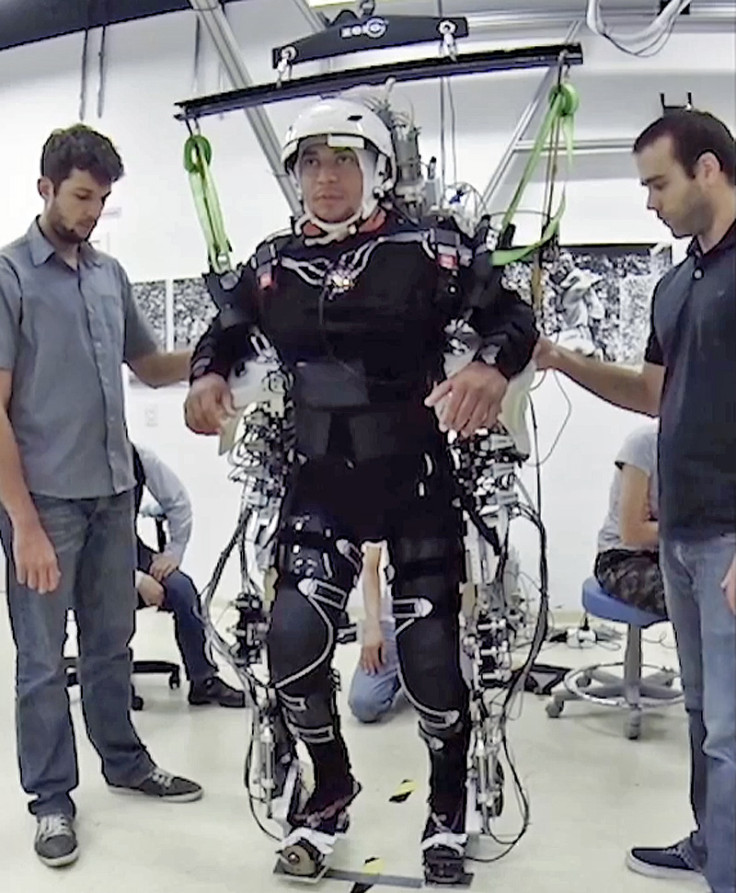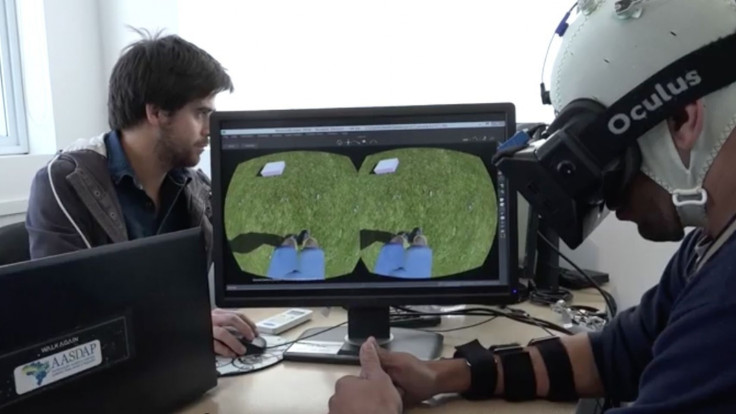Medical breakthrough: Exoskeletons, VR and brain training help restore feeling to paraplegics' legs
Miguel Nicolelis and the Walk Again Project have published new research showing brain-controlled robotics work.

Eight patients that have been paralysed from the waist down for years have regained partial sensation and muscle control in their lower limbs after training their minds with the help of exoskeletons and virtual reality – a medical breakthrough that shows it is possible for brain-machine interfaces to repair injuries even after a long time has passed.
Dr Miguel Nicolelis, a renowned neuroscientist from Duke University in North Carolina, US, working together with an international group of 100 engineers and scientists from 25 countries on the Walk Again Project, has published a new study together with videos of tests showing that there is still hope for people who have suffered from a stroke or have a spinal cord injury to regain mobility and strength again.
The research, entitled "Long-Term Training with a Brain-Machine Interface-Based Gait Protocol Induces Partial Neurological Recovery in Paraplegic Patients" is published in the Nature's open access online journal Scientific Reports.
"We couldn't have predicted this surprising clinical outcome when we began the project. What we're showing in this paper is that patients who used a brain-machine interface for a long period of time experienced improvements in motor behaviour, tactile sensations and visceral functions below the level of the spinal cord injury," said Nicolelis, co-director of the Duke Center for Neuroengineering.
"Until now, nobody has seen recovery of these functions in a patient so many years after being diagnosed with complete paralysis."
Building on robotic exoskeleton suit research from 2014
WALK_AGAIN_PAPER_4_SD from Nicolelis Lab on Vimeo.
IBTimes UK previously interviewed Nicolelis and his colleague Dr Gordon Cheng of the Institute for Cognitive Systems at the Technical University in Munich, Germany in 2014 about their journey to invent robotic exoskeleton suits that could be controlled by the mind after watching a monkey control a humanoid robot.
At the time, the research had already taken 12 years and Nicolelis was in Brazil preparing several young adult paraplegics to be able to stand up, walk and kick a football at the opening ceremony of the 2014 World Cup in São Paulo, Brazil on 12 June 2014.
The showcase of their research during the opening ceremony featuring young paraplegic Julian Pinto, broadcast live around the world, went off without a hitch, showing that it was indeed possible for a human brain to be trained to interact with a computer, and since then, Nicolelis and his team have continued to work with the patients and have even brought in Oculus Rift VR headsets to help advance their progress.
The patients have spent the last two years training using brain-machine interfaces, including VR software that used the patients' own brain activity to simulate full control of their legs, as well as a sleeve equipped with touch technology called "haptics" to offer tactile feedback (similar to the vibrations you feel through your handheld game console controller" so that the patients could differentiate and detect different types of pressure.
"The tactile feedback is synchronized and the patient's brain creates a feeling that they are walking by themselves, not with the assistance of devices," said Nicolelis. "It induces an illusion that they are feeling and moving their legs. Our theory is that by doing this, we induced plasticity not only at the cortical level, but also at the spinal cord."
Patients went from totally to only partially paralysed

After seven months of training, patients began to see a change, and after one year on this system, four of the patients had such improved sensation and control over their muscles that the doctors changed their diagnoses from "completely paralysed" to only "partially paralysed".
The patients also found that their bladder control and bowel function greatly improved, reducing their reliance on laxatives and catheters, thus reducing the risk of infection, which is a leading cause of death amongst patients that are chronically paralysed. In a video accompanying the study, a woman who had been paralysed for 13 years before the trial showed remarkable improvement.
Over the course of the study, from being completely unable to stand, she became able to use a walker and braces, and at 13 months, when her body weight was supported, she was able to move her legs voluntarily of her own accord.
Movie 3 (P1 steps) from Nicolelis Lab on Vimeo.
All of the patients in the study have now had over two years of training and are continuing their rehabilitation. The Walk Again Project intends to publish more data about the patients' progress, as well as starting a new trial with patients who have suffered spinal cord injuries recently (less than five years ago) in order to see whether applying the brain training treatment sooner can lead to better or faster rehabilitation.
"One previous study has shown that a large percentage of patients who are diagnosed as having complete paraplegia may still have some spinal nerves left intact," said Nicolelis.
"These nerves may go quiet for many years because there is no signal from the cortex to the muscles. Over time, training with the brain-machine interface could have rekindled these nerves. It may be a small number of fibres that remain, but this may be enough to convey signals from the motor cortical area of the brain to the spinal cord."
© Copyright IBTimes 2025. All rights reserved.






















